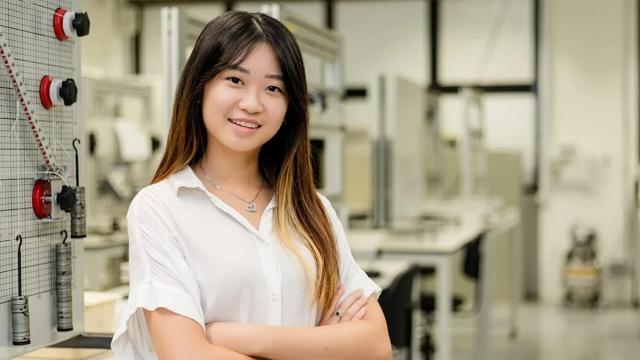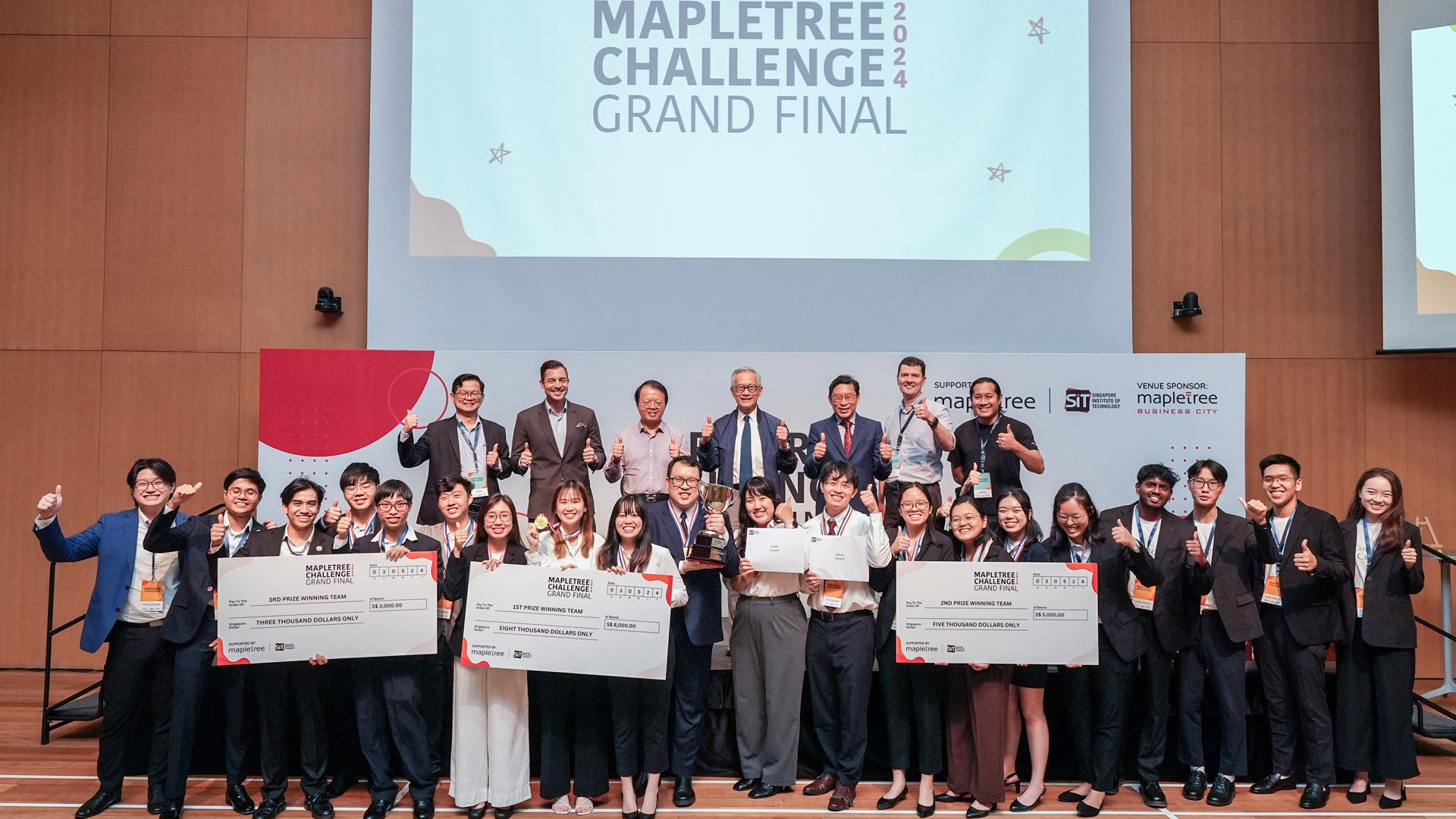
The five finalist teams of The Mapletree Challenge 2024 with senior management of SIT and Mapletree. (SIT Photo: Keng Photography/Tan Eng Keng)
Innovation is the key towards a more sustainable world that meets the needs of the present without compromising the ability of future generations to meet their own needs.
Now in its fifth year, the Mapletree Challenge 2024 presented an opportune platform for SIT (Singapore Institute of Technology) undergraduates to showcase their entrepreneurial acumen and devise sustainable solutions for global issues. This year's challenge centred on the theme "Sustainability and Innovation," and saw five teams presenting their unique innovations at the Grand Final for the Mapletree Gold, Silver, and Bronze awards, in addition to cash prizes.
This year, Team Aqua Gold, comprising Year 4 students in SIT’s Food Technology degree programme, clinched victory among the finalists. The Silver Award went to Nigel’s Fantastic Four, which also comprised students from Food Technology, while the Bronze Award went to Team ETEN, comprising Year 1 students from Mechanical Design and Manufacturing Engineering.
Mapletree Gold Award Winner: AQUA GOLD
Searching for a ‘30 by 30’ solution
In a world where a third of all food we produce is lost or wasted, Singapore’s ‘30 by 30’ food security target is ambitious but important: the ability to sustainably and locally produce 30% of all our nutritional needs by 2030. Taking into account our land scarcity, Aqua Gold approached local fish hatcheries that specifically farm tilapia fingerlings (ie. juvenile tilapia) with a novel concept: O.NILO.
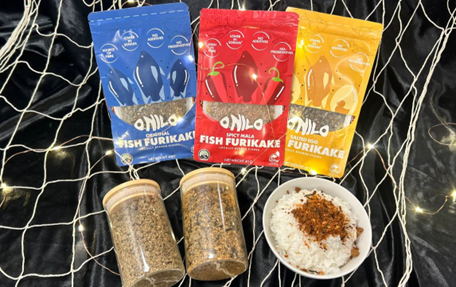
Transforming food sustainability
Inspired by the tilapia’s scientific name (Oreochromis niloticus), O.NILO is a ready-to-eat, tilapia-based furikake topping for foods like noodles and rice. One of O.NILO’s competitive advantages is that unlike many commercial furikake where breadcrumbs or rice puffs are the main ingredients, O.NILO’s higher fish content delivers more protein and nutrients to consumers, with lower sodium.
Another unique feature of O.NILO is the incorporation of okara, a nutrient-rich byproduct of processing soybeans into tofu and soy milk. Singapore alone generates 10,000 tonnes of okara waste annually, offering a readily available and underutilised source of additional nutrients (okara is 20% protein by volume).
Unlocking tilapia’s many advantages
O.NILO leverages several big benefits by using tilapia fingerlings. For example, fingerlings only take 3 weeks to reach their target size (3-5 cm long), versus a year for mature tilapia, or even longer for species like salmon (3 years) or tuna (5 years).
Beyond their quick gestation, using locally-bred fish cuts the carbon footprint. Tilapia fingerlings are zero waste because they’re fully edible, compared to traditional fish processing, which typically leads to about 40% wastage in bones and organs.
The fingerlings also require minimal space, crucial in a nation where just 1% of land is available for food production. Aqua Gold's plan also accelerates cash turnover for local fish farmers, with fingerlings ready in just weeks.
From R&D to reality in just 4 months
O.NILO's rapid development began with a fish farm site visit last year, followed by initiating seven potential ideas in January. This led to focus groups involving 88 panellists, further research, and guidance from professors, culminating in furikake as the chosen product line. Taste tests resulted in the creation of Original and Spicy Mala flavours, with Salted Egg in development.
As team member Audrey Lim explains, “Our professors guided us on how to conduct focus group discussions and consumer surveys. A lot of the processes were new to us.”
So what’s next for this year’s Mapletree Challenge champions? “Initially we wanted to innovate a product that reduces food waste. We’re now exploring if the fish farm we partnered with could expand their production to meet potentially substantial future demand,” said fellow member Chevonne Luo.
Team Members: Tsai Kok Pow (Team Lead), Lim Jia Wen Audrey, Chevonne Luo Zheng Yee, Lam Yun Jia Nurice, and Ng Pei Ying Evelyn
Mapletree Silver Award Winner: NIGEL’S FANTASTIC FOUR
How do we solve our polystyrene predicament?
Petroleum-based, single-use polystyrene packaging is everywhere in our modern lives, and not just padding our parcels. It’s in our oceans, our soil, and increasingly even in our bloodstreams. So what can we do to lessen its impact, or ideally, eliminate it altogether?
The Mycelium Solution
Seeing the problem, team leader Nigel Ang and his team wanted to develop a sustainable packaging material that’s easily moldable into the desired shape, while also being non-polluting and naturally biodegradable.Nigel explains: “We wanted a simple solution that has similar properties, texture, and uses as styrofoam packaging, while also being natural and biodegradable.”Their solution was mycelium, the material comprising fungus' intricate root system. Mycelium is optimal due to its strength, flexibility, biodegradability, rapid growth (typically under a month in favourable conditions), and widespread abundance across continents.
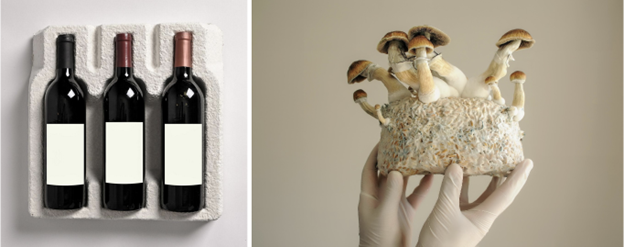
Innovative Integration: Recycling Disused Rice Straw
While mycelium-based packaging is not entirely new in the market , the novel element was the integration of rice straw. As a binding agent, rice straw adds strength and flexibility, with the added benefit that it’s a readily available byproduct of local agriculture (Southeast Asia alone produces 100 million tonnes of rice straw per year, 80% of which is normally discarded and burned).
“By including rice straw,” team member Daphne Ng explains, “we improve our packaging while simultaneously adding value to what’s essentially an abundant agricultural waste product.”
Pioneering the future of packaging
Given their backgrounds in food technology, the team was keen to innovate something packaging-related. That’s because globally, the sustainable packaging market is projected to top S$500 billion in the next five years.
While their product is still in the concept phase, overseas mycelium-related research has yielded interesting possibilities (e.g. mycelium-based vegan leather).
“We know mycelium is easy to grow, the raw materials are easy to get. The only limiting factor is the suitability of the manufacturing equipment,” according to Nigel. Given their success in the competition, the team is optimistic about the possibilities. “While we’ve only recently started this project, we’re focused on bringing it forward as a product that’s tangible, and value-adds to the industry,” says Daphne.
With the right equipment, Nigel’s Fantastic Four estimate they will need another 6 months for the final prototype. They are actively exploring the feasibility of opening a plant in Thailand, which could produce 20 tonnes of sustainable, mycelium-based packaging per month within just two years.
Team Members: Nigel Ang (Team Lead), Nicole Tan Hsing Yi, Tan Yee Lin, Daphne Ng Jing Ni, and Lim Zhi Xin.
Mapletree Bronze Award Winner: ETEN
3D printing’s untapped potential
The potential of 3D printing is vast, from revolutionising space manufacturing to empowering individual creators. In fact, the global market for 3D printing is poised to exceed USD$100 billion by the end of this decade. Singapore’s also the number one market in ASEAN for 3D printing, making it an industry that’s ripe for local innovation.
Can Singapore streamline the industry?
While we’re all familiar with the basics of 3D printing (ie. users fabricate complex designs out of malleable materials like plastics and metals), the aspect that really intrigued Team ETEN was one that most people don’t think about: how to reduce human labour in the 3D printing process.That’s because after printing a product, it must be manually removed before the next can begin, causing the printer to cool down. The printer then needs to be reheated, consuming about 0.2 kWh of energy each time.
Team ETEN's solution, 'Conveyo', integrates a conveyor system to the 3D printer to automatically remove finished products, maximising uptime, cutting manpower costs, and minimising energy waste.
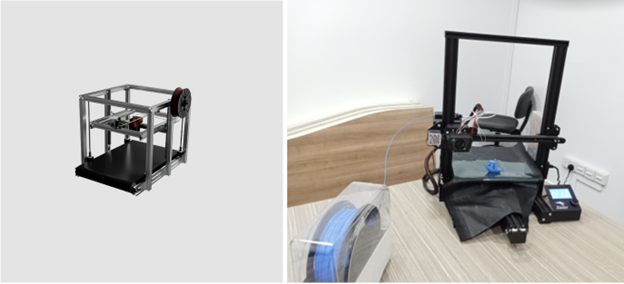
An unexpected innovation journey
Team ETEN’s journey of innovation began with an insight by team leader Ethan Lim while meeting a client for his side job selling 3D printing filaments. The client shared the challenges they faced regarding manpower and downtime, and Ethan saw an opportunity.
The team also unexpectedly discovered a solution to decrease the carbon footprint of 3D printing by addressing the reduction of required manpower in the process. Six months later, Team ETEN set themselves on a potential path to entrepreneurship with their new invention.
“While our initial goal was to reduce labour costs and wasted manpower, we quickly realised that we could simultaneously create real energy savings, which taken at scale could have a huge environmental impact in the coming years as the industry continues to grow,” says Ethan.
Business meets Innovation
One of the biggest challenges for Team ETEN was getting around the steep learning curve when it came to creating and selling their business plan to the judges.
“If we could participate in a sustainable innovation challenge again, we’d streamline the more scientific parts of our pitch, because the judges are also looking for a strong business case for your product. Yes, you can be incredibly innovative, but you also need to know where your target market is, and have clear goals for your project,” said team member Jeremiah Ho.
Given their recent success, Team ETEN is currently exploring various options, including showcasing their product and sourcing for potential investors at Singapore’s upcoming Industrial Transformation Asia-Pacific event this October.
Team Members: Ethan Lim Wei Qi (Team Lead), Jeremiah Ho Zhan Rui, Gareth Tan Jun Long, and Ke Ee Chong.
Leaving a legacy of sustainability
Since its inception in 2017, The Mapletree Challenge has fostered sustainability-driven guardians, benefiting over 1,600 SIT students across diverse fields. This year’s Mapletree Challenge continues to motivate students to become proactive change-makers, leveraging innovation to generate value. This marks another testament to the potential of SIT students to lead the charge in crafting a more sustainable future, not just for Singapore, but for the entire world.
This article was first published in Campus.sg.
![[FA] SIT One SITizen Alumni Initiative_Web banner_1244px x 688px.jpg](/sites/default/files/2024-12/%5BFA%5D%20%20SIT%20One%20SITizen%20Alumni%20Initiative_Web%20banner_1244px%20x%20688px.jpg)

